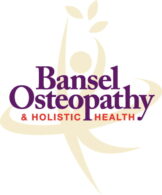Lordotic Posture (Anterior Pelvic Tilt)
What is lordotic posture?
Everyone’s lumbar spine curves in a little to help buffer force up our spine when we move. Those with a lordotic posture have an excessive curve in this area of the back which causes their pelvis and head to tilt forwards and their bottom and tummy to protrude.
This posture is also known commonly as anterior pelvic tilt, hollow or saddle back posture.


What causes lordotic posture?
Common causes of lordotic posture are:
- Pregnancy due to the weight and positioning of the baby alongside associated ligament and muscle laxity.
- Wearing high heels.
- Regular prolonged sitting/driving where glutei and abdominal core muscles get weak and back extensors, hip flexors and hamstrings become too tight.
- Obesity.
- Hypermobility.
- Gymnastics and ballet.
- Spondylolisthesis – a condition where one vertebra slips forwards relative to another.
- Osteoporosis.
What does having lordotic posture mean?
Lordotic posture is associated with:
- A change in appearance: a pronounced tummy, lower back curve and bottom accompanied by a rounded upper back and a forward head posture.
- Difficulty finding clothes to fit the increased lower back curve properly.
- Reduced mobility, pain and muscle spasms in your neck, upper and lower back.
- Groin, hip and knee pain.
- Increased pressure on your lumbar disc which can result in inflammation (discitis), degeneration and herniation.
- Sciatica or weakness in 1 or both legs.
- Bladder and bowel issues.
- Balance and co-ordination issues.
Do I have lordotic posture?
To check if you have lordotic posture, you can revisit Shani’s posture assessment video here or lie on your back/stand up against a wall and see how much distance there is between the floor/wall and your lower back.
How do I correct my lordotic posture?
If you have lordotic posture and want to work on correcting this at home we have some exercises to help! These exercises and more are also featured on our Youtube channel Building Strong Backs & Perfect Posture!
Both the glute bridge and toe tap exercises are considered safe to do in the 1st trimester of a healthy pregnancy, but please contact the clinic on 01444 200 575 & info@banselosteopathy.co.uk if you are currently pregnant for advice prior to doing these exercises.

